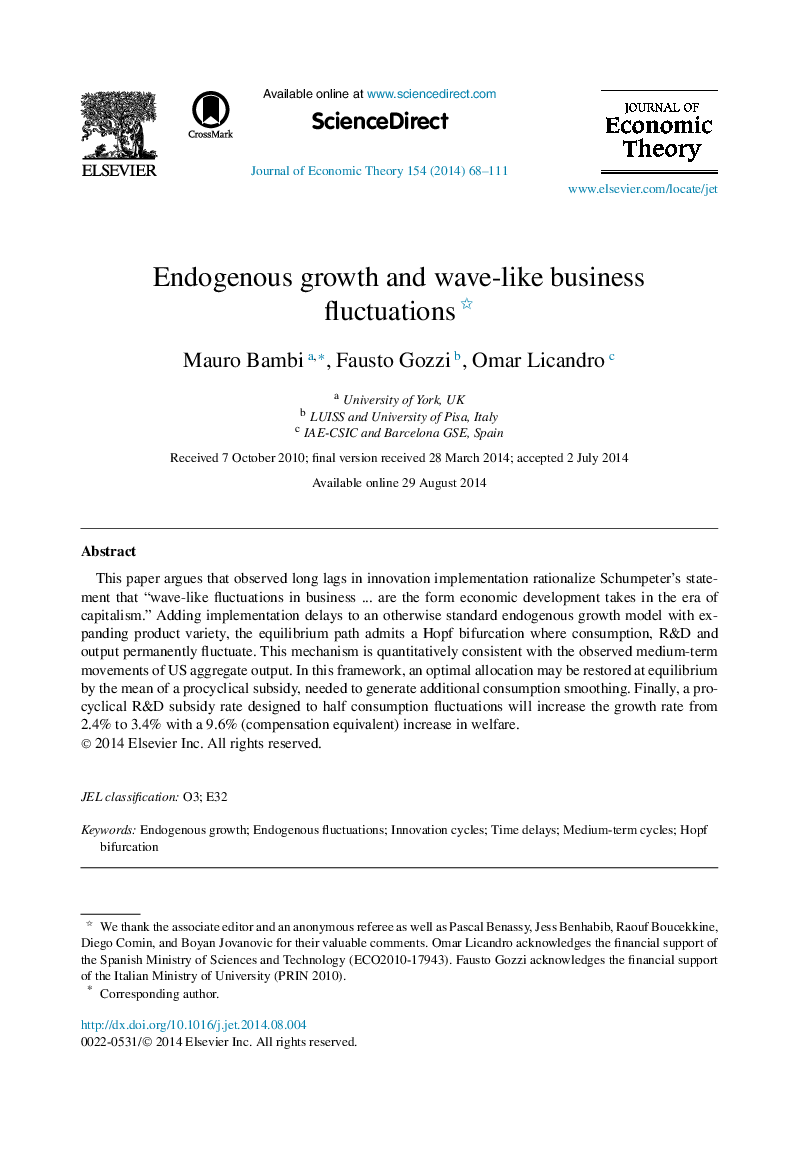| Article ID | Journal | Published Year | Pages | File Type |
|---|---|---|---|---|
| 956785 | Journal of Economic Theory | 2014 | 44 Pages |
This paper argues that observed long lags in innovation implementation rationalize Schumpeter's statement that “wave-like fluctuations in business ... are the form economic development takes in the era of capitalism.” Adding implementation delays to an otherwise standard endogenous growth model with expanding product variety, the equilibrium path admits a Hopf bifurcation where consumption, R&D and output permanently fluctuate. This mechanism is quantitatively consistent with the observed medium-term movements of US aggregate output. In this framework, an optimal allocation may be restored at equilibrium by the mean of a procyclical subsidy, needed to generate additional consumption smoothing. Finally, a procyclical R&D subsidy rate designed to half consumption fluctuations will increase the growth rate from 2.4% to 3.4% with a 9.6% (compensation equivalent) increase in welfare.
